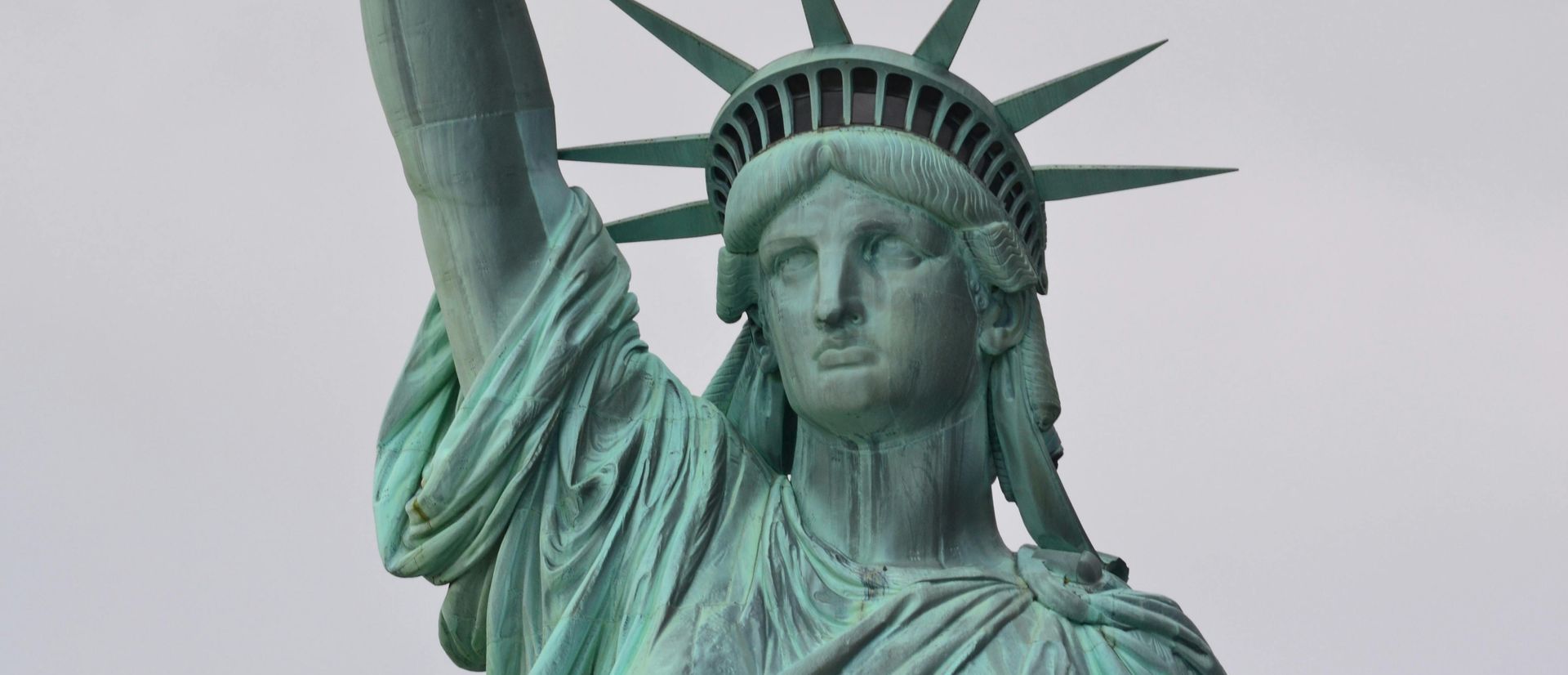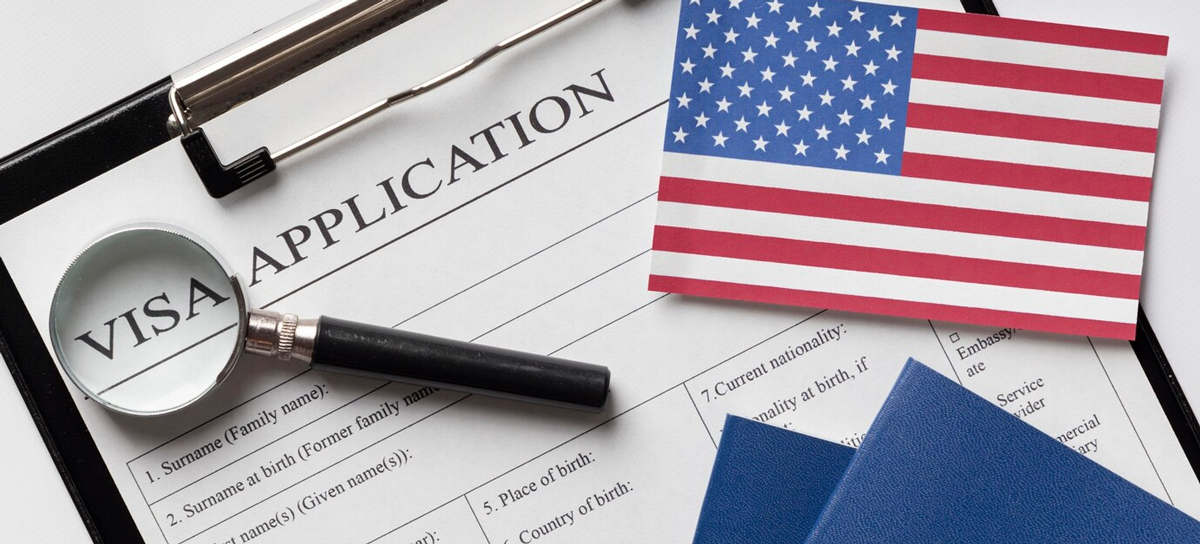For A Free Consultation Call (215) 546-4700 or Schedule a Virtual Zoom Meeting

April 10, 2025
Divorce settlements are often hard-fought answers to questions about the financial, custodial, and support obligations between former spouses. But what happens when circumstances change? In Pennsylvania, ex-spouses facing significant shifts in their circumstances can ask for modifications to alimony, child custody, and child support arrangements, but only under specific conditions and by following a specific process. Understanding when changes can be asked for and how to go about it is important information for anybody who is going through or has been divorced. Alimony Modifications - Pennsylvania allows modifications to alimony when there is a "substantial and continuing change in circumstances." Examples of changes that qualify include job loss, a significant reduction in income, retirement, remarriage, or cohabitation by the receiving spouse. However, if the former couple’s original agreement specifies that alimony is non-modifiable, changes may not be possible. Child Custody Modifications - Custody agreements can be changed if they’re no longer in the child's best interests. Common reasons for modification include a parent moving, changes in a parent's ability to provide care, evidence of abuse or neglect, or the child's preference (if they are of an age where it can reasonably be expressed). The Pennsylvania courts will always prioritize the well-being and stability of the child when considering changes in custody agreements. Child Support Modifications - Modifications to child support are generally granted when the petitioning parent can demonstrate that a significant financial change has occurred. These can include a substantial increase or decrease in a parent's income, a change in the child’s financial needs (e.g., medical expenses or educational costs), or a shift in custody arrangements. Either parent can request a review of child support obligations if there is a valid reason to do so. If you need to ask for a modification to your existing alimony, custody, or child support agreement, there are specific steps that need to be followed. Assess Your Eligibility - Before filing for a modification, make sure you have a legitimate reason under Pennsylvania law. The change in circumstances must be substantial and ongoing rather than temporary. File a Petition - File a petition with the same court that issued your original divorce decree. Your petition should describe the specific changes requested and provide supporting documentation for why they should be allowed. These can include financial records, employment details, or medical evidence. Attend a Court Hearing - The judge will review your petition and may schedule a hearing. Both you and your ex-spouse will have an opportunity to present your case, and the court will decide whether the requested modifications align with Pennsylvania law and the best interests of any children involved, if applicable. Life moves fast, and things can change in the blink of an eye. Pennsylvania law acknowledges that and allows for adjustments to divorce decrees when necessary. If you need help in determining your eligibility to ask for a change or in submitting a petition, contact us today .

April 3, 2025
As is true throughout the United States, Pennsylvania has labor laws that protect all workers, regardless of their immigration status. While there are nationwide standards established under the Fair Labor Standards Act (FLSA) and the Occupational Safety and Health Act (OSHA), Pennsylvania’s state laws provide additional protections to ensure fair treatment in the workplace. It’s very important that immigrant workers familiarize themselves with these rights so they can protect themselves from unfair treatment and exploitation. Wage and Hour Protections - All workers in Pennsylvania, regardless of immigration status, are entitled to the state minimum wage of $7.25 per hour and overtime pay of 1.5 times their regular hourly wage if they work over forty hours in a week. It is illegal for employers to withhold wages or refuse payment based on immigration status. Workplace Safety and Health Standards - Under OSHA, all employees, including undocumented workers, are entitled to a safe workplace free from hazards that could cause injury or illness. Employers are required to provide proper training and safety equipment and to report workplace injuries. Immigrant workers who face unsafe conditions can file a complaint with OSHA without fear of retaliation, even if they lack work authorization. Protection from Discrimination and Retaliation - Federal and state laws prohibit workplace discrimination based on race, national origin, religion, sex, or immigration status. In Pennsylvania, the Pennsylvania Human Relations Act (PHRA) provides additional protections against workplace discrimination. Employers are not permitted to fire, harass, or retaliate against workers for reporting labor law violations, seeking unpaid wages, or organizing for better working conditions. Workers' Compensation Rights - Pennsylvania requires employers to provide workers' compensation insurance covering medical expenses and lost wages due to work-related injuries. This coverage applies to all workers, regardless of their immigration status. Employers who refuse to provide these benefits are subject to having claims filed against them with the Pennsylvania Department of Labor & Industry. Right to Organize and Unionize - Immigrant workers have the right to join labor unions and collectively bargain for better wages and working conditions. The National Labor Relations Act (NLRA) protects all employees, including undocumented workers, from employer retaliation for union activities. Immigrant workers are rightly concerned about their rights in the current environment. Pennsylvania’s employers are subject to strong labor protections from both federal and state laws, and those laws protect all workers, regardless of their immigration status. When employees’ rights are violated, they can seek assistance from worker advocacy groups, legal aid organizations, state labor agencies, and attorneys. If you are an immigrant worker and you need more information about your legal rights, contact an experienced immigration attorney .

March 27, 2025
Divorce is one of life’s most challenging experiences. People going through the process often experience grief, anger, anxiety, and uncertainty — sometimes all at once. Prioritizing your mental health during this difficult time is essential: it will help you navigate the transition and think clearly. Below, we’ve compiled some strategies and resources that can help. Seek Professional Support Connecting with a therapist or counselor can provide invaluable emotional support. They can help you process your emotions, develop coping strategies, and gain clarity on the path ahead. If an individual therapist won’t work for you, look for online or in-person support groups so you can speak with others going through similar struggles. Look to Your Support System Surrounding yourself with supportive friends and family members can help you deal with feelings alone. Trusted loved ones can offer a listening ear, encouragement, and perspective. Alternatively, it’s just as important to avoid people who bring stress or negativity. Practice Self-Care Self-care activities promote relaxation and well-being. It might be exercise, meditation, journaling, or engaging in hobbies. Eating a healthy diet and getting adequate sleep and regular physical activity can significantly impact your emotional resilience. Practices including deep breathing, meditation, and yoga can also help you manage stress and maintain emotional balance. Set Boundaries Communicating with your ex-spouse can be a source of terrible stress. Though it may be necessary to talk about the divorce proceedings or childcare issues, set clear boundaries regarding conversations, and if conflicts are the norm or emotions become overwhelming, consider communicating through email or a third party. Stay Focused on What You Can Control It’s easy to feel helpless during a divorce, so focusing on what you can control can be empowering. Avoid getting stuck on things you can’t control, such as your ex’s behavior or court rulings. Instead, work on managing your finances, seeking legal counsel, and making informed decisions about your future. Explore Legal and Financial Guidance Anxiety about legal and financial matters can add to your stress. Make an appointment with a qualified financial advisor and an experienced divorce attorney to ensure you understand your situation and options. Having a solid plan can provide peace of mind. Divorce is challenging, but by prioritizing your mental health, seeking support, focusing on self-care, and informing yourself of your financial position and legal rights, you can navigate the process with strength and resilience. Remember, healing takes time, and you deserve compassion and care as you move forward.

March 20, 2025
As immigration policies tighten in the United States, individuals seeking legal entry find themselves navigating increasingly complex and frustrating pathways. Still, despite policy shifts and rising uncertainty, several legal avenues remain available, including work visas, family sponsorships, and asylum applications. The more you understand these options and how they work, the better you’ll be able to make an informed decision about your immigration journey. Work Visas: These are employment-based opportunities available to skilled workers, professionals, and laborers that offer a pathway to legal residency. United States immigration policy continues to provide multiple work visa options, including theH-1B visa available to those in specialized occupations such as IT, engineering, and healthcare; the L-1 visa that allows employees of multinational companies to work in a U.S. branch of their employer; the O-1 visa for those with extraordinary abilities in fields like arts, science, business, or athletics; and temporary work visas like the H-2A (agricultural work) and H-2B (non-agricultural work) allow seasonal or temporary workers to enter the country legally. Family Sponsorships: Family reunification continues to be a stated goal of America’s immigration policies, though recent reforms and confusion may make processing times longer and introduce additional scrutiny. Lawful permanent residents (LPRs) and citizens can still sponsor relatives through Immediate Relative Sponsorship of spouses, parents, and unmarried children under 21; Family Preference Categories including siblings and married children; and Spousal and Fiancé(e) Visas that allow foreign fiancé(e)s to enter the country for marriage, while CR-1/IR-1 visas allow spouses to secure residency. Asylum Applications: For those facing persecution in their home countries due to race, religion, nationality, political opinion, or social group membership, asylum remains a critical option. The U.S. and many other nations uphold asylum laws, but recent policies have imposed stricter eligibility criteria and heightened scrutiny. Stronger evidence of persecution is now essential to meet the new administration’s higher legal thresholds so applicants should seek legal aid to navigate the asylum process successfully. Ongoing policy changes have placed caps on visas and imposed stricter eligibility requirements for many applicants. Those who hope to immigrate or to help family members enter the United States should seek information from experienced immigration professionals who are tracking these changes and working together to understand the best way to move forward. For help, contact us today to set up a time to meet.

March 13, 2025
Whether you call it spousal support or alimony, the financial obligation to an ex-spouse following a divorce is frequently the subject of intense negotiations. No matter how much effort went into an initial agreement, a changing economy can significantly affect both the payer's ability to meet their support obligations and the recipient's financial needs. A legal process for modifications does exist and may be applicable in the face of economic changes, so it’s important to understand what the justifications for modifications are and how to pursue them. Modifications to spousal support can be based on numerous factors, including economic downturns, inflation, and job losses: Anything that shifts financial stability can directly affect an individual's ability to pay or the need for spousal support. A broader economic crisis can create ripple effects, including the paying spouse experiencing job loss, reduced income, or business downturns. These things may make it difficult for the payor to fulfill alimony obligations, and likewise, the spouse who is owed support may suffer the same impacts, struggling with rising living costs, unexpected expenses, or job instability. While some spousal support agreements proactively include terms that allow periodic cost-of-living changes, for those that don’t, the recipient may seek an increase in payments when high inflation hits so that they can maintain their standard of living. Similarly, a payer facing financial hardship can go to court to seek a reduction. Judges are generally open to modifications when a substantial change in circumstances occurs. These changes may include: Significant income reduction due to a job loss, salary reduction, or medical disability. Recipient’s improved financial status such as gaining employment, remarrying, or receiving a financial windfall. Cost-of-living Increases when inflation significantly affects the recipient’s financial stability. Retirement of the payer To seek a modification, the party requesting the change needs to file a petition with the court explaining the substantial change. The petition needs to include documentation that supports the claim, such as tax returns, pay stubs, employment records, and financial statements. The court will consider the financial well-being of both parties to assess whether the demonstrated change justifies an adjustment to the original agreement. Economic change is inevitable and unpredictable and can significantly impact the sufficiency or impact of spousal support agreements. Understanding the options available for modification can help both payers and recipients seek fair adjustments. An experienced family law attorney can help you with your specific situation.

March 6, 2025
On January 20, 2025, President Donald Trump signed Executive Order 14160, titled "Protecting the Meaning and Value of American Citizenship." The order, which aims to end birthright citizenship for children born in the United States to certain non-citizen parents, challenges the long-standing interpretation of the Fourteenth Amendment's Citizenship Clause, which grants citizenship to "all persons born or naturalized in the United States, and subject to the jurisdiction thereof." The executive order’s assertion that the phrase "subject to the jurisdiction thereof" has been misinterpreted has been met with significant pushback and doubt from legal experts. The order, which applies to individuals born on or after February 19, 2025, says that individuals born in the U.S. will no longer automatically receive citizenship. It particularly blocks birthright citizenship in two different scenarios: If the individual’s mother was in the United States illegally at the time of their birth and the father was neither a U.S. citizen nor a lawful permanent resident. If the individual’s mother was in the U.S. on a temporary visa (e.g., tourist, student, or temporary worker), and the father was neither a U.S. citizen nor a lawful permanent resident. Executive Order 14160 was met with legal challenges as soon as it was signed, with civil rights groups, including the American Civil Liberties Union filing lawsuits arguing that the order violates the Fourteenth Amendment and oversteps presidential authority. So far, several federal judges have issued preliminary injunctions blocking the order's implementation, with one calling the order unconstitutional and saying that it contravenes a century of legal precedent. While the Department of Justice has appealed these rulings, the U.S. Court of Appeals for the Ninth Circuit denied its emergency request to lift the injunctions, maintaining the block on the executive order. The appellate court emphasized that changes to citizenship rights should be enacted through constitutional amendments or legislation, not executive orders. The legal battle is expected to escalate, and the case will likely go to the U.S. Supreme Court, whose decision will have profound implications. If the Supreme Court upholds the executive order, it could fundamentally change the criteria for U.S. citizenship, leaving individuals previously considered citizens without a home country. Alternatively, if the Court strikes down the order, it would reaffirm the traditional understanding of birthright citizenship and limit the executive branch's authority to unilaterally redefine constitutional provisions. As the legal battle continues, many people are wondering what this means for their children. For assistance and answers to your citizenship questions, contact us today.

February 27, 2025
As an entrepreneur, you’ve invested enormous time, money, and emotion into building up your business. Protecting it is a high priority, but that can be difficult in the face of divorce. Nobody wants to plan for their marriage to break up, but preparing for the worst is the best way to preserve your interests. There are several proactive legal measures available to safeguard your business interests against the equitable distribution process. These include: Prenuptial and Postnuptial Agreements A prenuptial agreement is one of the most effective tools available for protecting a business. It allows both you and your spouse to agree in advance on how the business will be treated in the event of a divorce, ensuring it remains separate from marital assets. If a prenuptial agreement isn’t in place, a postnuptial agreement, signed after marriage, can serve the same purpose. These agreements can specify that the business, or its appreciation in value during the marriage, is not subject to division. Setting the Business Up as Separate Property Entrepreneurs should maintain clear boundaries between their personal and business finances, as doing so will help establish that the business is separate property. Never use marital funds for business purposes, and maintain meticulous financial records to help prove that the business isn’t a marital asset. Creating a Trust Placing your business in a trust is another effective way to protect it. A trust removes the business from your personal ownership, which makes it much less likely to be included when it comes time for marital asset division. A properly structured trust can keep the business from being contested during divorce proceedings. Implementing a Shareholder or Partnership Agreement If your business has multiple owners, a shareholder or partnership agreement can include terms that restrict the transfer of ownership during a divorce. These agreements can ensure that the divorcing spouse can’t gain control over the company by selling or dividing shares. Pay Yourself a Fair Salary It may be tempting to keep reinvesting your profits back into the business, but by paying yourself a fair salary, you avoid the court deciding that business growth is marital property. Include a Buy-Sell Agreement A buy-sell agreement can proactively address how ownership will be handled in case of divorce. It guarantees business continuity and protects other shareholders or partners from losing control of the entity. Speaking with an experienced attorney will help you identify which strategy best minimizes the risk of losing your business if your marriage fails. For more information, contact us today to set up a time to meet.

February 20, 2025
The attitudes and environment surrounding immigration to the United States are stricter than ever, and that means that applications require meticulous attention to detail and comprehensive preparation to be successful. The most important factor is ensuring that you’ve provided all the documentation that’s required and that all of your answers are accurate. One of the most important things to remember is that everything you submit should be properly translated, authenticated, and organized, and you need to include secondary supporting evidence whenever possible, especially when it comes to information about employment, education, and residential history. Never assume that a document is optional – provide everything requested in the instructions. When you’re completing your application forms, you need to be very precise and detailed. Every box on the application must be filled out accurately, with no blanks left open unless explicitly marked as "N/A" (Not Applicable). Double-check all dates, names, and numbers to make sure that they’re consistent across everything you submit, and when trying to convey complicated circumstances or situations you fear may represent a red flag, provide clear, detailed explanations rather than leaving matters open to interpretation. Financial requirements are often a major reason for rejection, so make sure you show that you meet or exceed the minimum income or savings requirements for your visa category. Provide comprehensive documentation of your finances, including bank statements, tax returns, and employment verification letters. If your finances fall short, consider finding a qualified joint sponsor and have them in place well before submitting your paperwork. When it comes to the immigration application process, timing is everything. Make sure that you submit all of your materials well ahead of any expiration dates, and if you’re asked for additional information, respond promptly and thoroughly within the specified timeframe. Be proactive throughout the process, including making a checklist of requirements and reviewing it multiple times before submission. Make copies of everything you submit, including receipts and tracking numbers of everything you mail in, and if your circumstances change during the application process, make sure that the relevant authorities know about your new situation as soon as possible. The immigration process was always complicated, but that’s especially true today. To give yourself the best chance of having your application accepted, consider working with one of our experienced immigration attorneys, who can review your application package and identify potential issues before submission. Contact us today to set up a time for us to meet.

February 13, 2025
Divorce is always hard, and harder when children are involved, and issues of custody need to be resolved. Child custody disputes become significantly more challenging when divorcing parents live in different countries or one parent wants to return to their home country from the United States and take the children with them. Jurisdictional conflicts, as well as legal and cultural differences, can create real and troubling obstacles in both deciding on and enforcing custody arrangements. One of the hardest aspects of deciding a child custody case where parents live in different countries lies in determining which country’s courts have jurisdiction over the custody dispute. While in many cases, custody jurisdiction is based on where the child has been living before the divorce, everything can change when a parent decides that they want to move children across international borders. There have been many sad and frustrating cases in which one parent has illegally taken their children to another country without the other parent’s consent. This leads to charges of international parental abduction. Repatriating the child can be legally and emotionally challenging, particularly because custody laws in different countries vary. While some countries prioritize mothers having custody of their children, others place greater emphasis on joint custody or grant sole custody to a parent based on different legal principles from those in the United States. The situation becomes even more complex when a country’s laws are governed by a dominant religion in the country, as is the case in countries governed by Sharia law. Perhaps the most difficult aspect of international custody disputes is the fact that even when a court grants custody or visitation rights, enforcing these rulings across borders can be close to impossible. Some countries may not recognize another’s custody orders, and this makes it hard for the non-custodial parent to even maintain contact with their child. To address these challenges, several international treaties and legal frameworks have been created to facilitate dispute resolution, including The Hague Convention on the Civil Aspects of International Child Abduction and The United Nations Convention on the Rights of the Child (UNCRC), and some countries have established bilateral agreements to handle child custody disputes between their citizens. International child custody cases require careful navigation of complex legal systems. Parents facing these difficult situations need legal advice from attorneys who are experienced in international family law. If you are facing the reality or the potential of an international child custody dispute, contact us today to see how we can help.
Unlock your legal success with a free consultation!
Call us now at (215) 546-4700 or click the link to request a Zoom meeting. Your future starts with the right advice today!

Law Office of Jensen Bagnato, P.C.
1500 Walnut St, Suite 1510, Philadelphia, PA 19102
Overview
Practice Areas
© 2025
All Rights Reserved | Jensen Bagnato, P.C. | Disclaimer | Privacy Policy
